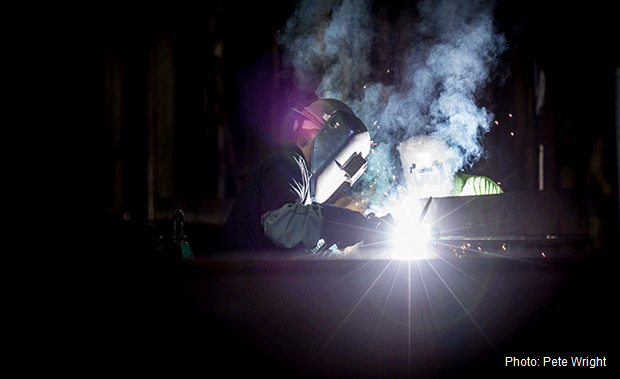Millions Missing Out On Well-Paying Manufacturing Jobs
- ehdtech
- Oct 4, 2017
- 2 min read

The manufacturing industry’s image means millions could be missing out on a rewarding and well-paying job that would improve their standard of living.
The modern American manufacturing worker is often also a hands-on high-tech worker. In fact, the average manufacturing worker earns $81,289 annually in pay and benefits — well above the national average across all industries. Manufacturers are hiring, but the challenge is helping people get the skills they need to secure these jobs.
Help wanted for a thriving industry.
Today, manufacturing contributes $2.18 trillion to the U.S. economy. Manufacturing is a thriving, productive, dynamic industry. Robots and the Internet of Things improve our productivity, the power of data cuts waste, the advancement of 3-D printing makes us more responsive to customers and digital modeling solves problems before they arise. But these advancements don’t happen on their own. They require engineers, technicians, programmers and scientists. They require modern manufacturing workers. Without them, our progress could be in jeopardy.
Today, as many as 350,000 manufacturing jobs are unfilled. By 2025, manufacturers expect 3.5 million job openings but 2 million of them could sit unfilled — promising good wages and rewarding work but lacking candidates.
This is more than a manufacturing challenge. It is an American challenge. The strength of our economy hangs in the balance.
Leading the way.
Manufacturing employers are working hard to close this skills gap, forging partnerships with community colleges as well as local and regional organizations. Many offer on-the-job training and apprenticeships so that workers can earn and learn at the same time. Apprentices take home a paycheck and, over time, a credential or a degree. They gain valuable knowledge while the company gains a talented worker. Manufacturing companies see a person’s potential whatever his or her age, experience or situation — regardless of whether a person is a recent graduate or looking for a midlife career change.
This is more than a manufacturing challenge. It is an American challenge.
Manufacturers are working hard to bring people of all backgrounds onto shop floors and teams, including underrepresented groups such as women, young people, veterans, minorities and those who can benefit from new opportunities.
Taking action.
Manufacturers alone can only do so much. Everyone, including parents, teachers and elected officials, has a role to play.
Old models of education must be rejected. The modern economy is changing too fast to stick to rigid, outdated systems. We need flexibility and a focus on the STEM fields (science, technology, engineering and math). Education needs to reflect the modern manufacturing look.
Manufacturers are, however, making it easier for educators to see the difference between the modern and past manufacturing.
This Friday, the first Friday of October, is Manufacturing Day, and manufacturers across the country will open their shop floors to welcome students, teachers, parents and the public to see what modern manufacturing really looks like. Every year, participants report gaining a better perspective of the industry and having a more positive view of the opportunities available. Students say they are more likely to see a future in manufacturing.
By attending an event on Manufacturing Day, you can help build a new generation of modern manufacturing workers.
Farr, David and Timmons, Jay. (2017). “How the Manufacturing Industry’s Image Problem Is Hurting the American Economy”. Retrieved from http://www.futureofbusinessandtech.com/education-and-careers/how-the-manufacturing-industrys-image-problem-is-hurting-the-american-economy.






























Comments